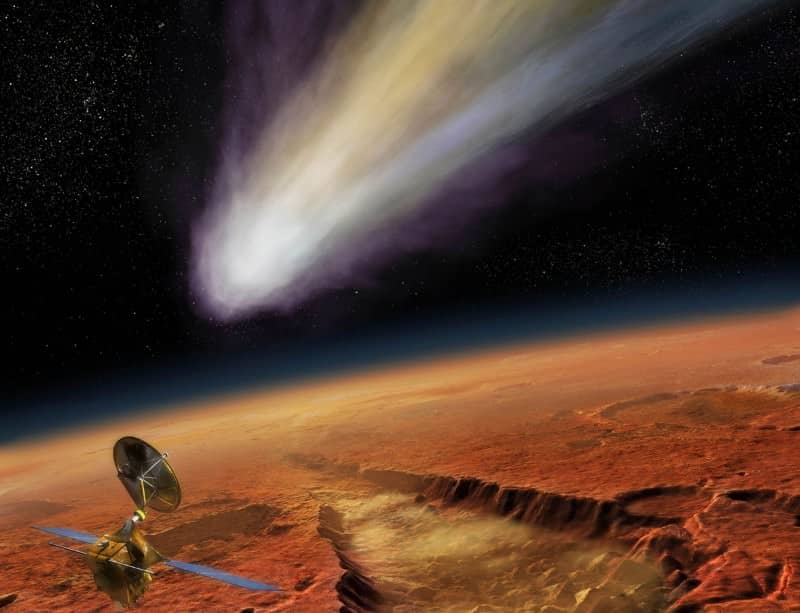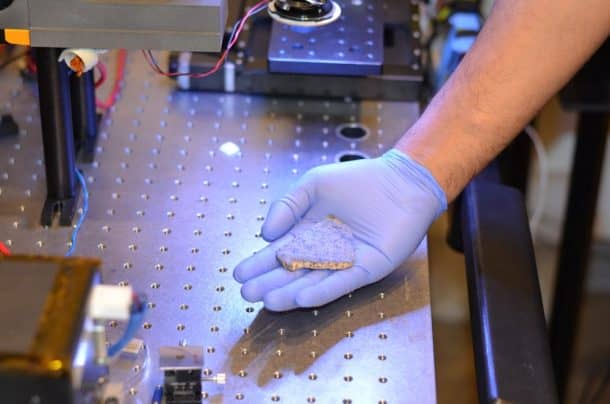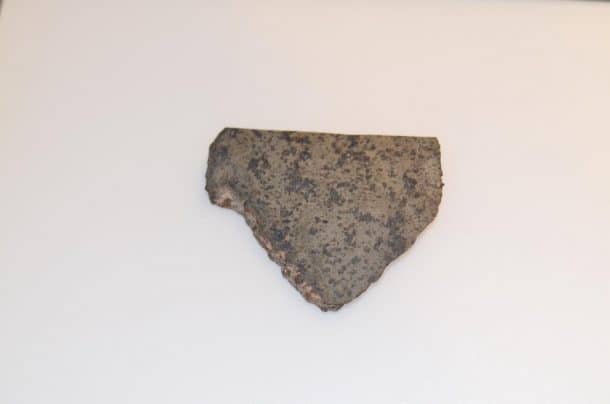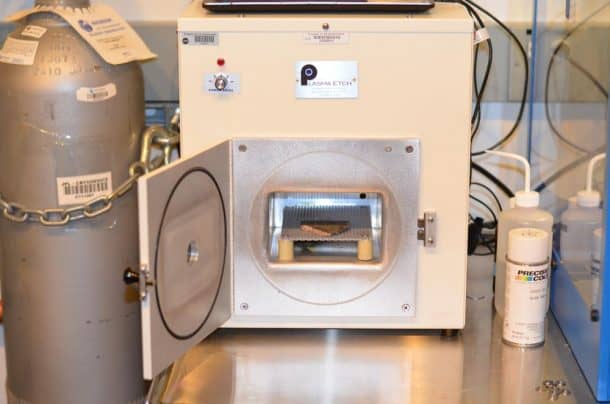The Mars 2020 rover mission will be carrying a piece of Mars back to the plant. NASA’s purpose of sending the meteorite back to the planet of its origin is a practical one. The sample will be acting as a calibration target for one of the mission’s main instruments.

Sending a spacecraft to Mars requires a lot of time, money, and labour. All of that is wasted if the spacecraft reaches the surface and sends back inaccurate data. This is why each mission has a set of calibration targets that make sure the video equipment is properly adjusted.

A calibration palette consisting of US 1909 penny was used on the Curiosity rover for adjusting the sharpness of the rover’s camera, colour chips, a metric standardized bar graphic, and a stair-step pattern for depth calibration. There will be a similar palette on the Mars 2020 rover but it will also include a fragment of the meteor Sayh al Uhaymir 008 (SaU008) for adjusting the high-precision laser on the rover’s arm.
The laser is called the Scanning Habitable Environments with Raman and Luminescence for Organics and Chemicals (SHERLOC). It has been designed to illuminate features on rock samples which are as fine as human hair and then analyze them using Raman and fluorescence spectroscopies. NASA engineers want to use a calibration sample as similar to Martian rocks as possible in order to obtain the necessary precision.

“We’re studying things on such a fine scale that slight misalignments, caused by changes in temperature or even the rover settling into sand, can require us to correct our aim,” said Luther Beegle of the Jet Propulsion Laboratory in Pasadena, California. “By studying how the instrument sees a fixed target, we can understand how it will see a piece of the Martian surface.”
NASA claims that the idea behind SHERLOC is to use the laser to cause carbon-based compounds to shine the same way a UV lamp shines. Then the resulting spectrogram will be scanned for signs of life. The meteor sample will be used to help the instrument in picking out the texture of the organic chemicals better.
There are only 200 confirmed Martian meteorites on Earth and this one, provided by the National History Museum in London, was selected because it not only provides good calibration characteristics but is also robust enough to survive the journey without any damage.

“The SHERLOC instrument is a valuable opportunity to prepare for human spaceflight as well as to perform fundamental scientific investigations of the Martian surface,” said Marc Fries, a SHERLOC co-investigator. “It gives us a convenient way to test material that will keep future astronauts safe when they get to Mars.”
Let’s wait and see what the Mars 2020 rover mission reveals.


